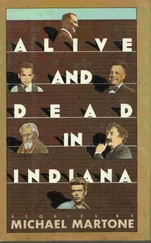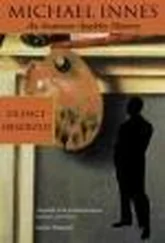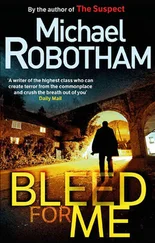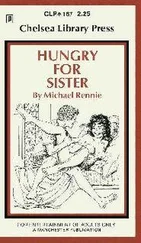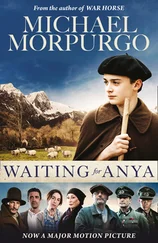KENT, OHIO
It doesn't help that the girl is not a student, had run away and found herself on May 4 thkneeling next to one of the bodies. The.30–06 round from the Ohio National Guard troop's M1 Garand rifle found him there. It doesn't help either that he too found himself at this shared space and time, the bullet entering his mouth, on his way to, let's say, a literature class that would consider a contemporary poem self-consciously meditating on the efficacy of poetry to accomplish anything of real importance in the real world. The bullet strikes him through his mouth, enters his brain, killing him instantly. Meanwhile, the physics of the recent fusillade, the thermodynamics of the energy released in the reaction shaped within the brass precinct of the crimped cartridge, the military science of massed and sustained and suppressing fire is expressed irrefutably in the outcome and recorded in the phototropic mechanics of the chemical emulsion of contrast, heightened by the technique of burn and dodge, captured in the famous photograph. At the same time 342 miles southeast, a soldier, a member of the Third Infantry Regiment (The Old Guard) attached to the Sentinel unit, stands post at the Tomb of the Unknowns at Arlington National Cemetery. The soldiers of the Old Guard are the only troops in the United States Army that can parade with bayonets fixed, a privilege that commemorates an action taken at the Battle of Cerro Gordo in the War with Mexico. And the Sentinel on this day has his bayonet fixed. He glides along at ninety strides per minute marching the twenty-one steps on the mat in front of the tomb, pausing twenty-one seconds before turning and repositioning his M1 Garand rifle with bayonet fixed to the shoulder opposite the tomb, pausing another twenty-one seconds, and then walking another twenty-one steps back past the sarcophagus where the original Unknown Soldier is entombed and the slabs of marble on the plaza floor entombing the Unknowns from the Second World War and the Korean Conflict. What isn't known now is if there will be a fourth Unknown from the war being fought in Vietnam. No one knows how it will resolve. The war in Southeast Asia has only now expanded into other theaters of operation, into Cambodia and Laos. The knowledge of this has sparked protests around the country. At Kent State University, in Ohio, four are being killed at this moment by the massed, sustained, and suppressing fire of the Ohio National Guard. The Sentinel standing post wears no rank insignia to assure that he will not outrank the unknown rank of the Unknowns he guards. What is not known at this moment is that the current war in Southeast Asia will present a problem of knowing and not knowing. The kind of fighting being conducted there, the advances in forensic sciences, especially in the fields of mitochondrial DNA, will make it impossible to not know from now on. There will be, in the future, those who are still missing. The Lost will be lost during the conflict in Southeast Asia, but there will no longer be the question of identity. Any remains found — a crumb of bone or sliver of sinew, tuft of hair, piece of tooth, sample of skin — provide a sufficient key. The crypt of the Unknown for the Vietnam War will remain empty, will be, at some future date, rededicated, no longer the resting place of that kind of uncertainty, and will be transformed to another uncertainty, to the empty bed of those who simply disappeared, who have left no trace. The girl kneeling next to the body of the student in Ohio — I feel as if I should know her. I feel I should know the body. I should know everything. They are missing. They are missed. There is something missing. Everything is missing.
LA HONDA, CALIFORNIA
On the living room floor, Neil Young sits tinkering with an O gauge Lionel engine, a Nickel Plate Berkshire, as big as a loaf of bread, black, detailed down to the handholds on the running boards and the pilot. The bell swings on its gimbal, each coal in the tender etched, given depth. He unscrews the sandbox cowling. There is a wired portal inside the guts of the toy. He seeks to bug the engine with a silicon chip. Imprinted in its circuitry is the music of the real locomotive. He recorded it, a run-by in Lima, Ohio, a static display brought back to steam. He stood in a crowd of men with directional microphones aimed, reel-to-reel Wollensaks running, amplifying dishes focused as the engine spun its wheels, caught and coughed, huffed to life with that thump thump thump as the exhaust expelled. He got it down, wired, this riff. That pant and this hiss, remembered in the fused sand, coded in the cinders of ones and nils. A miniature speaker is hidden in the rig, buried behind the grill of the smokestack. If it works, he thinks, the sound of the bellowing smoke will bellow out like smoke. He sets the engine on the rails, pets it like a pet. Its running lights dim, merely sopping up the leaking amperage before he turns the juice on full, twisting the knob on the transformer. The toy train starts, begins to move, jerks, all electric and steamless. Then the sound streams from the tympanic boiler, vibrating a diaphragm no bigger than a pencil's eraser. The sound sounds real, he thinks, sounds as if you were there, reduced by scale, a diminished chord, but, still, polished by the memory, the memory the sound has evoked, and he waits, listens closely, knows, there, there will be a long sustained sad slow whistle at the crossing, a kind of warning, and, even in miniature and over this great distance and lost time, a lament.
JACKSON, MISSISSIPPI
He was eighteen months old when his father (a student here protesting the continuing harassment on Lynch Street that then bisected the campus and gave egress to the white outsiders who threatened the students emerging from Stewart Hall) was shot dead in front of Alexander Hall. This was a few days after the killings in Ohio. Two killed in Mississippi, twelve more wounded. The police used Browning pump-action shotguns, and later the FBI estimated over four hundred rounds struck Alexander Hall, where the police line had swept the protest from Lynch Street — named for a black elected official and not, ironically, some grim historical designation of purpose. This was made clear years later when the man's initials, J.R., were affixed to the signs, changing the word from an act to actor. After the shooting, as the wounded were carried to the hospital, the police (according to testimony) deliberately picked over the ground, retrieving the spent shells. The pictures of the aftermath reveal and witnesses report that the building was “riddled“ by gunfire. The windowpanes of the five-story dorm were all shattered, and the blue decorative panels were shredded by overlapping patterns of shot. His father died of wounds from two double-O gauge pellets in his brain, another piercing his right eye, a fourth buried under his left arm. He returns to the word “riddled,“ its inadequacy to describe the ferocity of the damage meted out that night. He sees the building every day. There is now a grassed-over plaza where Lynch Street once was, a monument for his father and Green, some solid slabs of marble. In his grandmother's garden he used a riddle to sift the dirt fine from stone and other debris. The screens in the dorm room window were ripped and torn. He shook the dirt back and forth, sieved it through the riddle, and the pebbles, double-O gauge and larger calibers, collected in the concave mesh with, sometimes, a piece of glass, a bottle cap, a bone. What happened happened. He panned out the dust. What was left was leavings, a cairn of small stones, evidence only that something was over, done. And all the meager residue can be, in retrospect, made-up, manufactured, faked. His life, this life then is a fiction, a made thing. His father's death a fact. A fact, yes, the fictions, the residue of his death all around him. He likes to read the building, left standing, stopping on his way back to his own dorm, placing his fingers in the still visible and accessible (what shall he call them?) bullet holes, in the brick façade, a kind of Braille, a blind riddle, a kind of real.
Читать дальше



